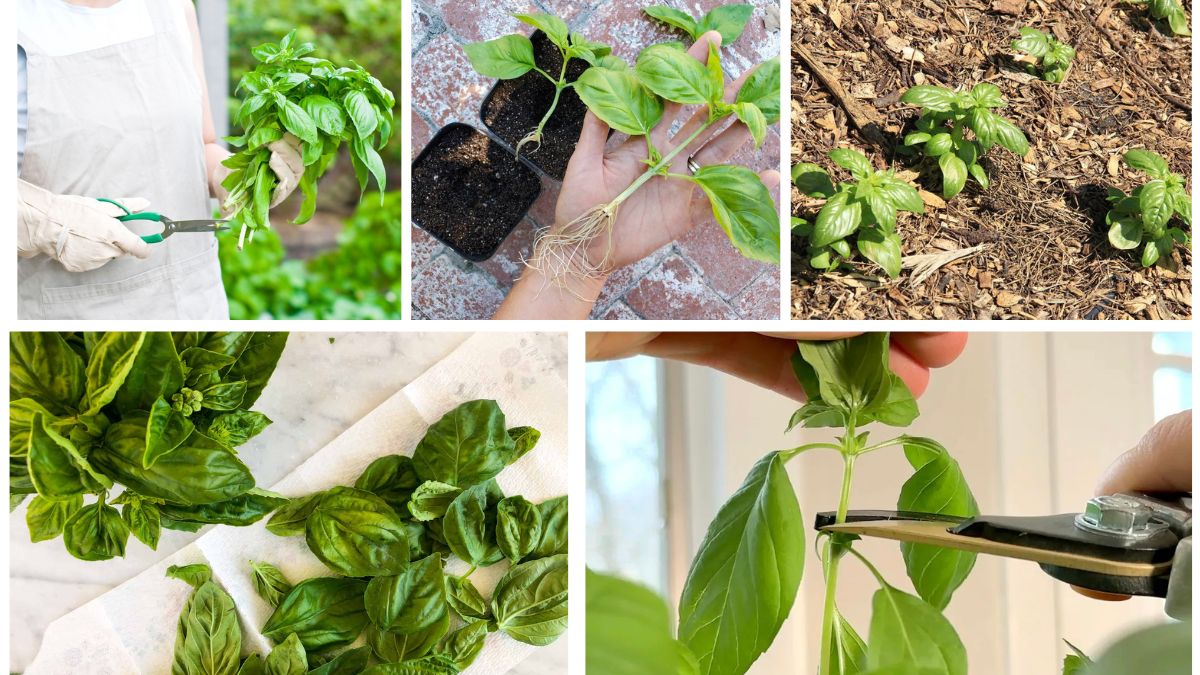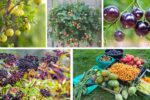Basil (Ocimum basilicum) is one of the most popular herbs worldwide, prized for its fragrant leaves, culinary versatility, and medicinal properties. Whether you’re a home gardener or an aspiring chef, knowing how to harvest basil leaves correctly is essential for maintaining a healthy plant, prolonging its growth, and maximizing leaf production. Improper cutting can damage the plant, reduce yield, and even stunt its growth.
This comprehensive guide provides step-by-step instructions, practical tips, and expert insights to help beginners and enthusiasts cut basil leaves effectively while ensuring the plant thrives throughout the season.
Introduction

Basil is more than just a culinary herb—it’s an essential ingredient in pesto, salads, sauces, and aromatic dishes, as well as a source of antioxidants and essential oils. However, the way you harvest basil leaves significantly affects the plant’s longevity and productivity.
When harvested correctly:
- Basil plants produce more leaves and branches, creating a bushier plant.
- The plant stays healthy and less prone to disease.
- Leaves remain fresh, flavorful, and aromatic for culinary use.
Understanding the growth pattern and anatomy of basil plants is key to cutting leaves properly.
Step 1: Choosing the Right Time to Cut Basil
Timing is crucial for optimal leaf quality and plant health.
Best Time of Day
- Morning hours are ideal because the essential oils in leaves are at their peak.
- Avoid harvesting during hot afternoons as leaves may wilt quickly.
Growth Stage
- Focus on cutting mature leaves, typically those larger than 2–3 inches.
- Avoid cutting too many young leaves; these are vital for continuous growth.
Seasonal Considerations
- During the peak growing season (spring and summer), basil regrows quickly after cutting.
- In cooler months, cut sparingly, as the plant’s growth slows down.
Step 2: Understanding Basil Anatomy
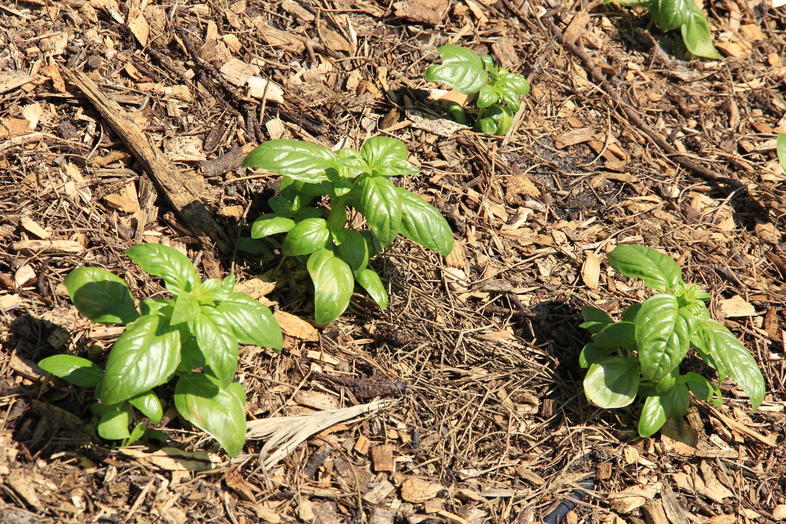
Knowing where to cut prevents damage and promotes healthy regrowth.
- Stem Nodes: These are points on the stem where leaves emerge. Cutting just above a node encourages branching.
- Central Stem: Cutting too close to the base can weaken the plant. Leave the bottom leaves intact.
- Leaves: Select healthy, vibrant green leaves; avoid yellowing, spotted, or damaged leaves.
Proper cutting encourages the plant to produce multiple side shoots, making it bushier and more productive.
Step 3: Tools You’ll Need
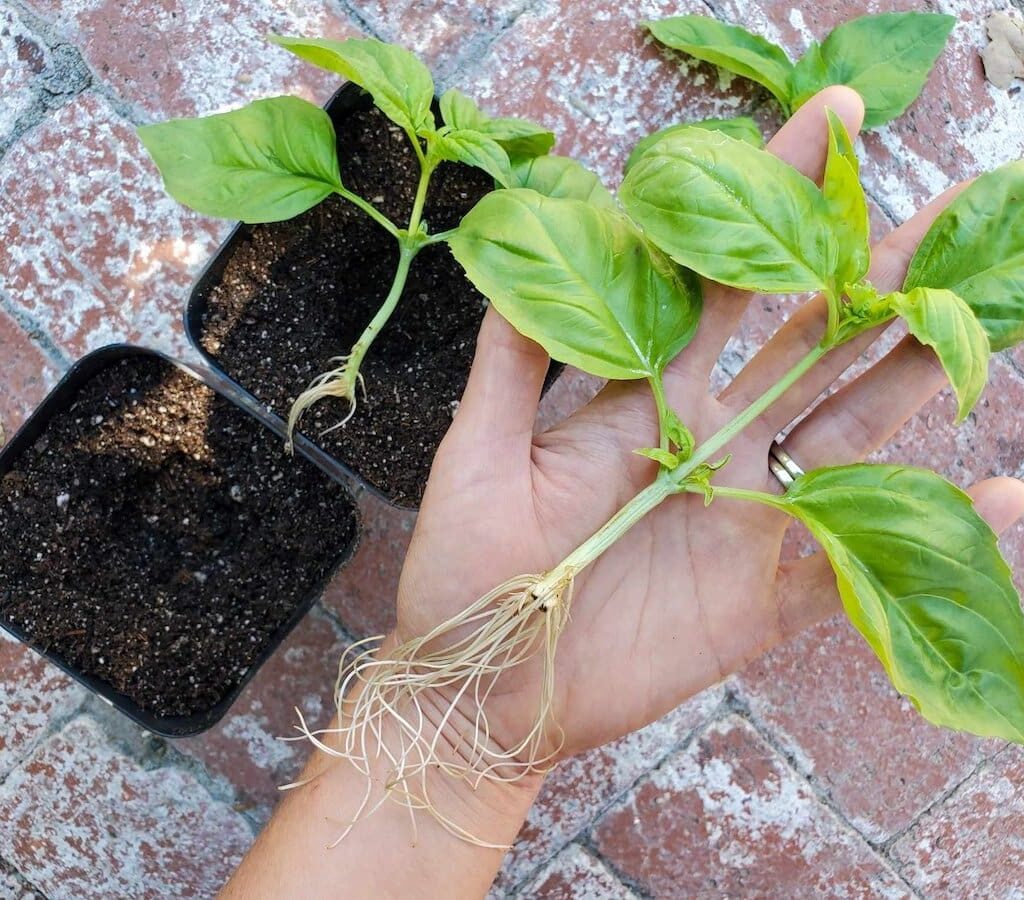
Using the right tools ensures clean cuts without harming the plant.
Recommended Tools
- Sharp scissors or pruning shears: Avoid tearing leaves, which can damage the plant tissue.
- Clean hands or gloves: This prevents contamination and spread of disease.
- Small container or basket: Collect leaves without bruising them.
Maintenance Tips for Tools
- Sterilize scissors or shears with rubbing alcohol before use.
- Keep blades sharp to make precise cuts and minimize plant stress.
Step 4: Cutting Basil Leaves Correctly
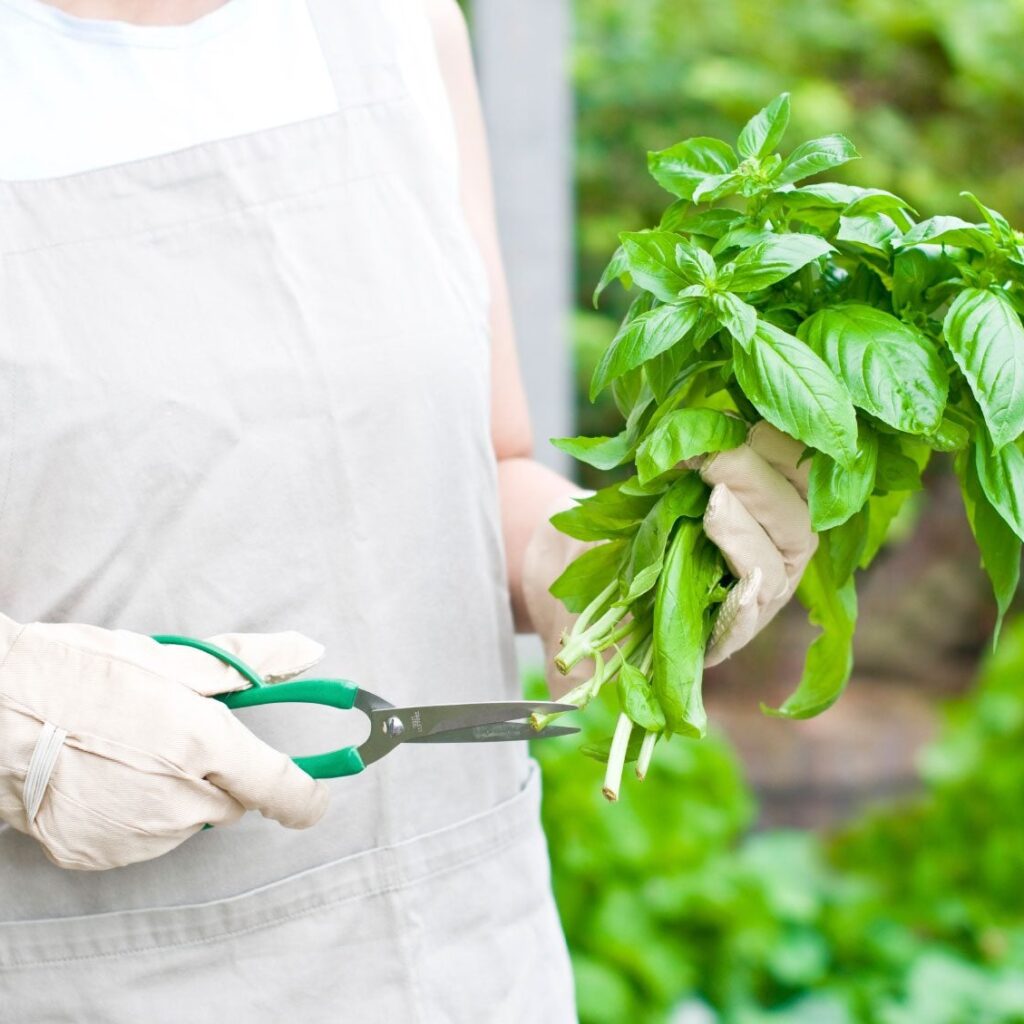
Follow these steps for optimal leaf harvest:
Step-by-Step Process
- Identify the Target Stem: Choose a stem with several mature leaves and at least one node.
- Cut Above a Node: Place scissors just above the top set of leaves at a 45-degree angle.
- Leave Enough Foliage: Ensure at least two-thirds of the stem remains intact to allow regrowth.
- Harvest Regularly: Frequent, light harvesting encourages the plant to produce more leaves.
- Pinch Flowers Early: If the plant starts flowering, pinch off flower buds to redirect energy to leaf production.
Harvesting Techniques
- Snipping: Ideal for precise cuts without disturbing surrounding leaves.
- Pinching: Using fingers to remove tips works well for small, tender leaves.
Step 5: Post-Harvest Handling
Proper handling preserves flavor, aroma, and shelf life.
Short-Term Storage
- Store leaves in a plastic bag or airtight container in the refrigerator.
- Add a damp paper towel to maintain moisture and prevent wilting.
Long-Term Storage
- Freezing: Chop leaves and freeze in ice cube trays with water or olive oil.
- Drying: Hang stems upside down in a well-ventilated, dark area for several days.
Culinary Tips
- Use fresh leaves for pesto, salads, and garnishes.
- Add leaves toward the end of cooking to preserve their aroma and flavor.
Step 6: Encouraging Regrowth
After harvesting, proper care ensures your basil plant continues to thrive.
Watering
- Basil prefers moderately moist soil, not soggy.
- Water at the base of the plant to avoid wetting leaves, which can lead to fungal growth.
Fertilization
- Use a balanced liquid fertilizer every 2–4 weeks to encourage healthy leaf production.
- Avoid excessive nitrogen, which may make leaves more tender but less flavorful.
Sunlight
- Basil requires 6–8 hours of sunlight daily.
- In low light conditions, consider supplemental grow lights indoors.
Pruning and Pinching
- Continue pinching tips regularly to maintain bushy growth.
- Remove yellowing or damaged leaves promptly.
Step 7: Common Mistakes to Avoid
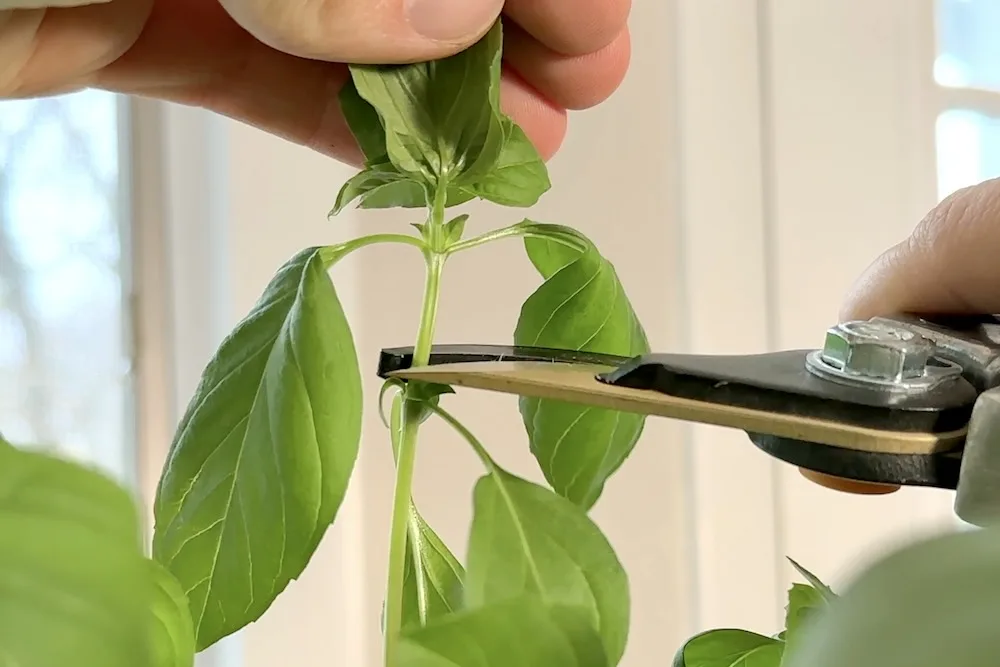
Even experienced gardeners can make errors when harvesting basil.
- Over-Harvesting: Cutting too many leaves at once can stress the plant.
- Cutting Without Knowledge of Nodes: Skipping node placement can prevent regrowth.
- Ignoring Flower Buds: Flowering diverts energy from leaf production.
- Using Dull or Dirty Tools: Can cause torn stems or spread disease.
- Neglecting Care Post-Harvest: Lack of water, sunlight, or nutrients slows regrowth.
Correcting these mistakes ensures healthy plants and abundant leaves throughout the season.
Conclusion
Cutting basil leaves correctly is an essential skill for gardeners and culinary enthusiasts alike. By understanding plant anatomy, proper timing, cutting techniques, and post-harvest care, you can enjoy a continuous supply of fresh, flavorful leaves while keeping your basil plant healthy and productive.
Regular, careful harvesting encourages bushier growth, higher yields, and long-lasting plants, making basil a rewarding addition to any garden or indoor herb collection. With patience, practice, and attention to detail, anyone can master the art of harvesting basil efficiently, sustainably, and deliciously.
Growing and cutting basil correctly not only enhances your culinary creations but also provides a deeper connection with nature and a sense of accomplishment from nurturing a thriving, aromatic herb plant.
